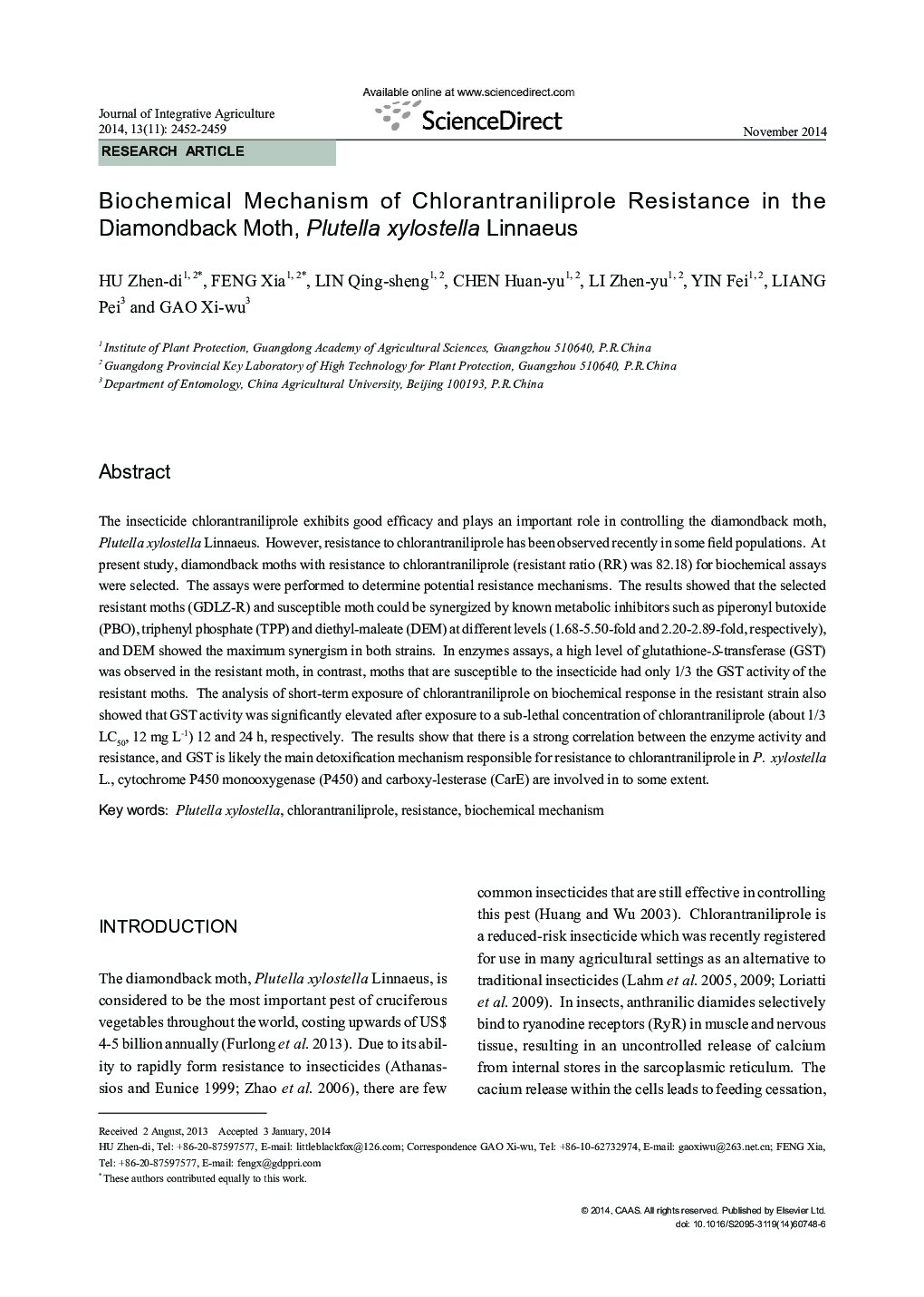| Article ID | Journal | Published Year | Pages | File Type |
|---|---|---|---|---|
| 4494441 | Journal of Integrative Agriculture | 2014 | 8 Pages |
The insecticide chlorantraniliprole exhibits good efficacy and plays an important role in controlling the diamondback moth, Plutella xylostella Linnaeus. However, resistance to chlorantraniliprole has been observed recently in some field populations. At present study, diamondback moths with resistance to chlorantraniliprole (resistant ratio (RR) was 82.18) for biochemical assays were selected. The assays were performed to determine potential resistance mechanisms. The results showed that the selected resistant moths (GDLZ-R) and susceptible moth could be synergized by known metabolic inhibitors such as piperonyl butoxide (PBO), triphenyl phosphate (TPP) and diethyl-maleate (DEM) at different levels (1.68–5.50-fold and 2.20–2.89-fold, respectively), and DEM showed the maximum synergism in both strains. In enzymes assays, a high level of glutathione-S-transferase (GST) was observed in the resistant moth, in contrast, moths that are susceptible to the insecticide had only 1/3 the GST activity of the resistant moths. The analysis of short-term exposure of chlorantraniliprole on biochemical response in the resistant strain also showed that GST activity was significantly elevated after exposure to a sub-lethal concentration of chlorantraniliprole (about 1/3 LC50, 12 mg L−1) 12 and 24 h, respectively. The results show that there is a strong correlation between the enzyme activity and resistance, and GST is likely the main detoxification mechanism responsible for resistance to chlorantraniliprole in P. xylostella L., cytochrome P450 monooxygenase (P450) and carboxy-lesterase (CarE) are involved in to some extent.
